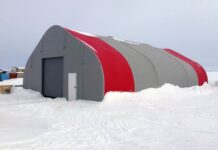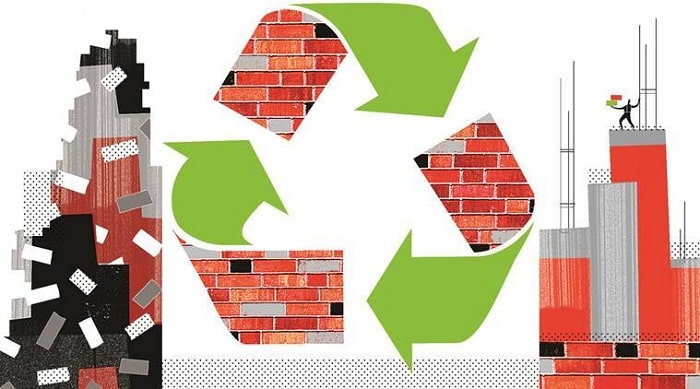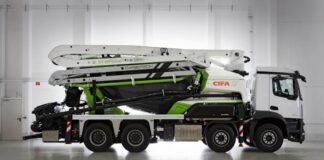During construction (or demolition) of a building project, plenty of materials end up in landfills, where they remain, unused, for years on end. We refer to these components as Construction and Demolition Waste, or CDW. And when we look at the raw numbers, there is far too much of this type of waste around the world. In fact, in 2016, the UK alone produced over 60 million tonnes of CDW.
Obviously, 60 tonnes of material that you won’t use in a building project is a massive waste of resources. With that in mind, governments around the world have been covering this topic in great detail. Needless to say, the idea of recycling it all has become a priority, both to the global government officials and to the regular, everyday craftsmen like yourself. Therefore, this article will focus on the basics of CDW recycling and how (and if) it can benefit you.
Different Types of CDW
With technology always advancing, craftsmen will work with new materials and combine them with old ones. And while it’s always instructive for construction companies to keep up with the times, you can’t (and shouldn’t) forget the basics.
Concrete
Concrete is frequently used in both public building projects and private homes. It’s incredibly durable and long-lasting in the right conditions.
In terms of forming concrete waste, you can do it in two ways. The first one involves testing concrete samples on-site and then discarding the mixture if it’s not up to the standards. The second way includes the concrete from a demolished building. One way you can reuse this concrete is to crush this concrete in order to use it as aggregate.
Timber
Whether it’s a house, summer home, gazebo, front porch, or shed, there’s bound to be some timber in your home. In addition to being an important building component, timber can also be used for temporary fixtures during construction. It’s incredibly widespread, so the waste that comes from it usually numbers in millions of tonnes every year.
Brick
More often than not, bricks will be used as a building material for residential projects like houses. Most of the brick-related components come from demolition, and the bricks that come from demolished houses contain mortar and plaster, so you can’t really reuse them as they are. More often than not, people crush them and use them as filling materials.
Paper and Cardboard
Interestingly, cardboard and paper make up one-third of the CDW components. Obviously, neither one of these components is used in construction or demolition. However, most of the products and other raw components that you need come in cardboard packaging. Moreover, there are plenty of paper elements that come within these packages, such as invoice copies, promo flyers, catalogs, etc.
Ferrous Metal
Ferrous metals are items that contain iron. Usually, craftsmen would utilize wrought or iron, as well as alloy or carbon steel. Unlike other types of CDW components, you can actually recycle ferrous metal many times. More importantly, it’s an incredibly profitable type of CDW if you’re looking to sell it.
Non-Ferrous Metal
Unlike ferrous metal, these items contain no iron, though they are just as common in the trade. Some examples include lead, copper, zinc, and aluminum. And since you can find these metals in so many different industries, they are perfect for reusing and reselling.
Masonry
Technically, both concrete and bricks fall under this category. However, there are plenty of other types of masonry CDW that you can just as easily recycle. These include bush rock, roof and ceramic tiles, marble, and many more. Nearly every building project will contain some of these CDW components, so you’ll manage to either reuse or recycle them.
Plastic
It’s an alarming statistic, but 91% of the plastic we produce isn’t recycled. That huge amount of CDW can be extremely useful for elements such as floors, roofing, PVC window noise barriers, and cable ducting. However, before reusing plastic, it’s necessary to clean it properly and remove all potential contaminants.
Methods of CDW Recycling
Generally speaking, you will be doing most of your material separation on-site. Not only is this a good way to sort everything you don’t need, but it also encourages a responsible working atmosphere among the employees. In addition, it will make future recycling endeavors a lot easier.
Of course, you don’t have to do everything on-site. Commingled recycling is another popular option, where you use a single container and haul off all CDW to a different location for sorting. It doesn’t have the benefits of the on-site option, but it does leave your site free of excess CDW and helps you finish the project faster. If you want to reap the benefits of both methods, you can always try hybrid recycling. With this method, you sort materials in fewer containers than with on-site recycling (e.g., one for timber, one for masonry, and one for non-recyclable materials). Next, you haul them off for further segregation off-site, reducing the workload.
But choosing the method is just the first step. You’ll also need to know the best way to handle specific types of components.
Segregating and Handling Timber
If possible, try to reuse large wooden structural elements. If you can’t, gather the lumber CDW you’ve separated and take it to a proper recycling facility. However, no matter what you do with the lumber, you need to have it re-certified. Contact a proper lumber inspector (if possible, let them inspect the timber on-site) and, once they grade your timber, discuss the following steps with them.
Segregating and Handling Metal
The first thing you need to do on-site is separate ferrous and non-ferrous metals. Prices for both groups usually vary from month to month, but it all depends on the quantity and the quality of the CDW. For instance, in 2020, ferrous metal CDW could be sold for anywhere between $60 and $210 per tonne. On the other hand, you could sell non-ferrous CDW like copper, lead, etc. for as little as $260 and as much as $5,300 per tonne.
Handling Paper and Cardboard
Separating and baling paper and cardboard is usually done on-site. By selling bales of paper to domestic mills, you stand to earn $230 per tonne.
Handling Reusable Roof Tiles and Bricks
Numerous construction companies simply crush bricks and roof tiles in order to use them as aggregate. However, if you store them and clean them up, you can sell them for reuse, since some homeowners enjoy using old-fashioned building elements.
The Extra-Step Forward: LEED Certification
Recycling is more than saving money on excess waste, of course. Modern construction companies focus on creating projects that are environmentally-friendly, non-intrusive, and highly-efficient. If you’re interested in pursuing this path, you will need to get LEED Certification.
LEED is an international green-building rating system. It is grouped into five different categories:
- Building design and construction
- Operations and maintenance upgrades
- Interior design and construction
- Neighborhood development
- Homes
With this certification, your projects will gain international recognition. But more importantly, it will prove that you’re committed to staying green and reducing the amount of CDW on the planet.




































